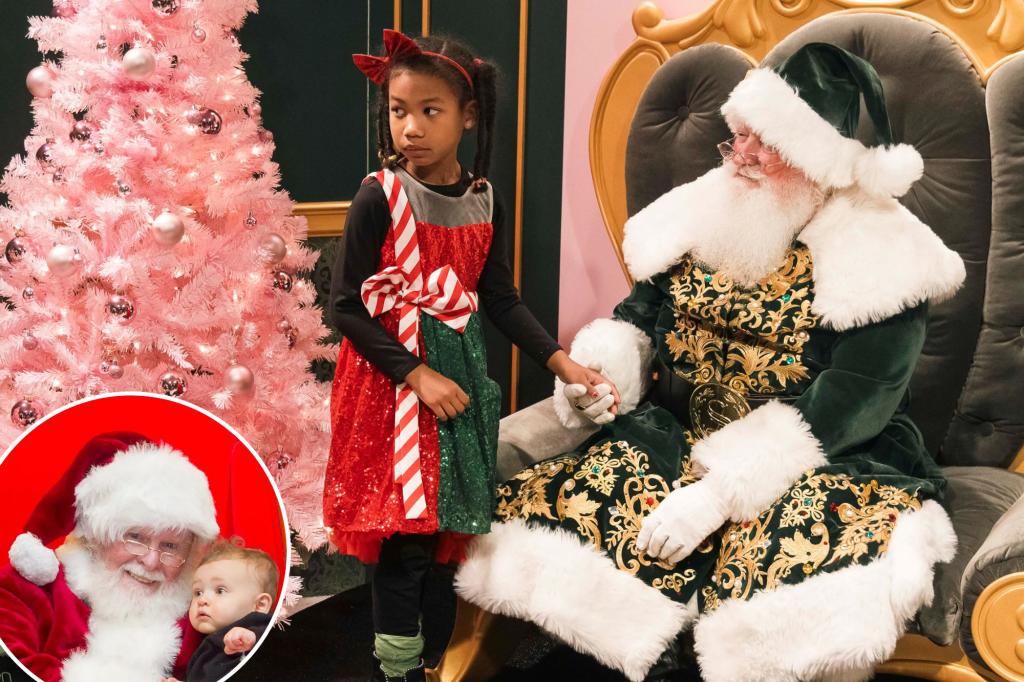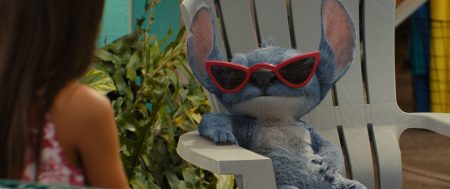The holiday season of 2023 brought with it a vibrant, yet controversial, twist to a cherished tradition at Bloomingdale’s flagship store in New York City. In a partnership with the Broadway musical “Wicked,” the iconic Santaland underwent a dramatic transformation, trading its traditional North Pole aesthetic for an Emerald City theme inspired by the popular show. This meant pink Christmas trees, “Wicked”-branded merchandise, and most notably, a Santa Claus clad not in his signature red suit, but in a shimmering green ensemble with gold embellishments. This departure from tradition sparked a mixed reaction, with some embracing the novelty while others expressed their disapproval, particularly on social media platforms.
The change in Santa’s attire became a point of contention for many parents who felt it disrupted the quintessential image of Christmas and risked confusing or disappointing their children. Several parents vented their frustration online, recounting their experiences of bringing their children to Bloomingdale’s Santaland only to be met with a green-suited Santa, leaving some children bewildered and even in tears. The criticism also extended to the perceived over-commercialization of the holiday season, with the green Santa being seen as a blatant marketing ploy for the “Wicked” movie starring Ariana Grande and Cynthia Erivo, whose promotional activities also drew considerable attention.
Children, accustomed to the traditional image of Santa Claus, also reacted with surprise and confusion to the unfamiliar green suit. Some expressed their preference for the classic red, associating it more strongly with the Christmas spirit. While some parents proactively informed their children about the change beforehand to mitigate potential disappointment, the sight of a green Santa still proved unsettling for some youngsters. The unexpected alteration to a beloved holiday figure sparked a discussion about the balance between embracing innovation and preserving cherished traditions, especially during a time steeped in nostalgia and familiar rituals.
For Santa Doug, Bloomingdale’s resident Santa since 2019, the change in attire marked a significant departure from his usual role. He admitted to being informed about the green suit only a month prior, making it his first Christmas season without his traditional red garb. While he embraced the change and adopted a playful explanation for his unusual attire, attributing it to being in the Emerald City, he acknowledged that it was predominantly adults, not children, who questioned the deviation from tradition. This observation further highlighted the generational divide in the reception of the green Santa, with adults appearing more attached to the established imagery of Christmas.
The controversy surrounding Bloomingdale’s green Santa extended beyond the confines of the department store, prompting a broader conversation about the evolving nature of holiday traditions and the commercial influences shaping them. Seasoned Santas, like Tim Connaghan, a veteran Santa Claus performer with decades of experience, expressed their commitment to the traditional red suit, suggesting they would likely decline a request to wear a different color. This perspective underscores the importance of preserving the classic image of Santa Claus for many performers who embody the role, highlighting the tension between adapting to modern trends and upholding the established symbolism associated with the holiday figure.
The Bloomingdale’s green Santa incident serves as a microcosm of the ongoing debate about the commercialization of Christmas and the evolving nature of holiday traditions. While some welcome creative interpretations and partnerships that bring a fresh perspective to the festive season, others remain steadfast in their adherence to traditional imagery and customs, fearing that excessive commercialization and novelty will dilute the true meaning and spirit of Christmas. The incident sparked conversations about the delicate balance between innovation and tradition, raising questions about how far holiday icons can be reimagined without compromising their core significance and emotional resonance.










